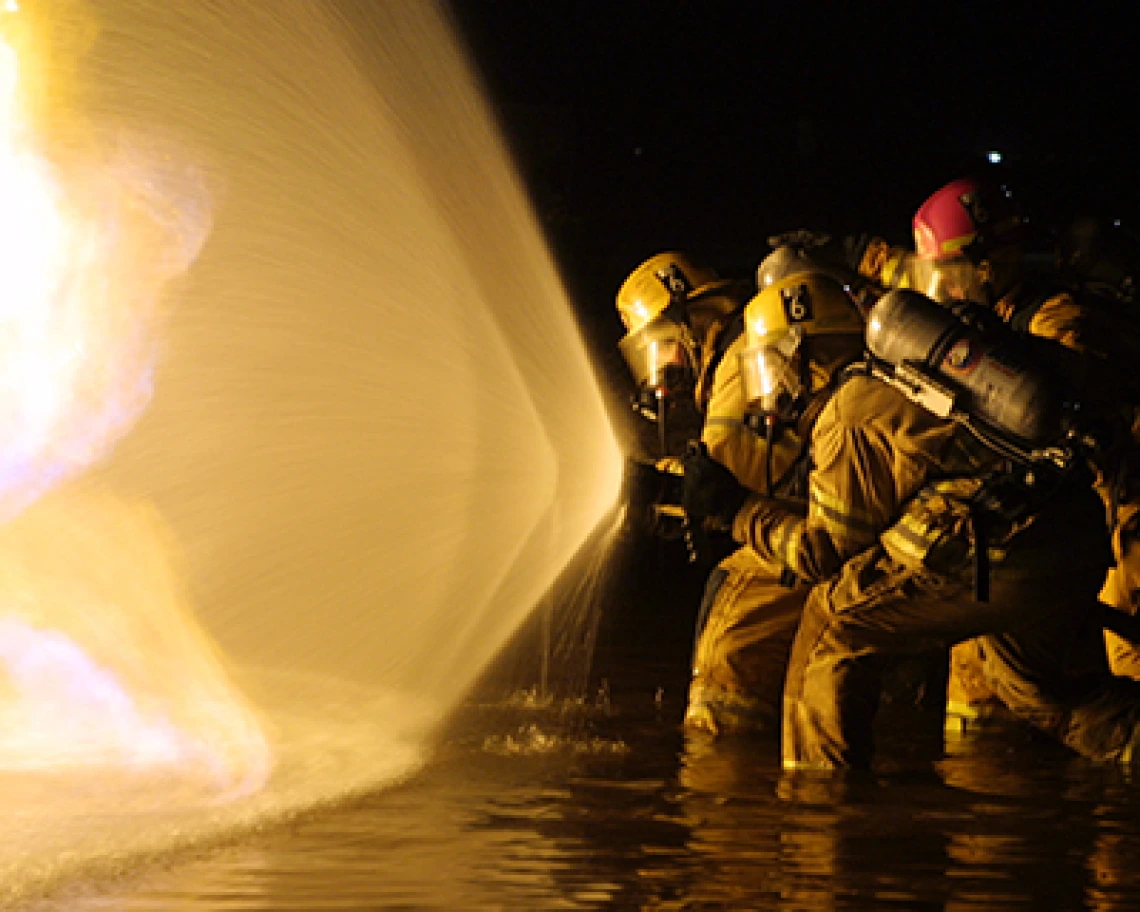UArizona Health Sciences Researchers Study Health Risk of a Group of Chemicals in Firefighter Foam and Protective Gear
Researchers from the UArizona Mel and Enid Zuckerman College of Public Health received a $1.5 million grant from the Federal Emergency Management Agency to lead a study of occupational exposures to “PFAS chemicals” among firefighters.


Dr. Jeffrey Burgess
To advance knowledge on exposure to PFAS chemicals and the associated health risks, researchers from the University of Arizona Mel and Enid Zuckerman College of Public Health received a $1.5 million grant from the Federal Emergency Management Agency (FEMA) to lead a study of occupational exposures among firefighters.
PFAS can be found in a wide range of consumer products people use every day, such as upholstery, insulation, electronics, cleaning products, pizza boxes, fabrics and non-stick cookware. Unfortunately, some older-generation PFAS may stay in the human body for long periods. As people get exposed to these chemicals from different sources over time they may suffer adverse health effects.
Exposure to PFAS in the general population has been linked to cancer, thyroid disease, immune suppression, elevated cholesterol, respiratory disease and decreased fertility. However, the health effects in firefighters are not well understood. Newer-generation PFAS generally stay in the body for a shorter period, but very little is known about their toxicity to humans.
Firefighters may be exposed to PFAS in many ways, including burning household items, potential contamination from personal protective equipment (or “turnout gear”) and firefighter foam, known as aqueous film-forming foam (AFFF), containing PFAS, which is used to put out flammable and combustible liquids.
“Firefighters need more information to develop best-practice recommendations to reduce their exposure to PFAS and prevent the associated toxic effects,” said lead researcher Jeffrey Burgess, MD, MS, MPH, associate dean of research and professor at the UArizona Mel and Enid Zuckerman College of Public Health.
Very little published research exists on firefighter exposure to the newer class of PFAS. By testing the blood and urine of firefighters participating in the study, researchers will measure how much of the old and new PFAS is absorbed into their bodies.

Photo credit: Tucson Fire Department
“These new research funds from FEMA’s Assistance to Firefighters Grant program not only will support our national FFCCS team in assessing firefighter exposure to PFAS through multiple exposure pathways, but also administer a national survey instrument assessing AFFF products and uses,” said FFCCS Data Coordinating Center leader Alberto Caban-Martinez, DO, PhD, MPH, assistant professor of public health sciences at the University of Miami, Leonard M. Miller School of Medicine.
“Because PFAS is part of firefighter personal protective equipment and part of firefighting foam—both of which are used to fight fires—understanding how different sources contribute to firefighters’ PFAS exposure and how such exposure may impact firefighters’ risk of cancer or other health outcomes is crucial,” said FFCCS co-leader of the Exposure Assessment Core Team Miriam Calkins, PhD, MS, research industrial hygienist, National Institute for Occupational Safety and Health, Centers for Disease Control and Prevention.
In addition to PFAS, firefighters are exposed to a large number of hazardous chemicals on the job. Dr. Burgess’ collaboration with the Tucson Fire Department over the past five years has resulted in changes that have made a big difference based on the results of his previous research.
“Washing dirty gear right away, or “wash downs,” immediately after leaving a fire scene, making sure dirty gear is bagged so other people are not exposed to it, and taking a shower as soon as they get back to the station, substantially reduces the amount of chemicals in their urine showing the interventions are effective,” Dr. Burgess said.
The new study aims to identify the most important PFAS exposure routes and compare the practices for limiting exposure in different airport fire departments where firefighting foam is used in case of aircraft fires. The results will provide up-to-date information on PFAS exposure and insights into potential prevention strategies to limit exposure in the workplace.
“The results from this research by Dr. Jeff Burgess and colleagues will inform national standards, manufacturing guidelines, operational, training and decontamination practices in the fire service,” said University of Arizona President Robert C. Robbins, MD. “Protecting the health of our nation’s firefighters and first responders is vital to the overall safety of our nation, and I am proud our university is contributing to that important effort.”
Researcher contact:
Dr. Jeffrey Burgess
520-626-4918
jburgess@email.arizona.edu
The Federal Emergency Management Agency, Grant No. EMW-2018-FP-00086
About the University of Arizona Mel and Enid Zuckerman College of Public Health
Established in 2000, the Mel and Enid Zuckerman College of Public Health at the University of Arizona Health Sciences is the first nationally accredited college of public health in the Southwest. Today the college remains the only accredited college of public health in the state of Arizona, with campuses in Tucson and Phoenix. The college enrolls more than 1,100 students per year across degree programs at the bachelor's degree, master's degree and doctoral levels. Through research, education and community engagement, the UA Zuckerman College of Public Health continues to find solutions to public health problems in Arizona, the Southwest and globally. For more information: publichealth.arizona.edu (Follow us: Facebook | Twitter).
About the University of Arizona Health Sciences
The University of Arizona Health Sciences is the statewide leader in biomedical research and health professions training. The UArizona Health Sciences includes the Colleges of Medicine (Tucson and Phoenix), Nursing, Pharmacy, and the Mel and Enid Zuckerman College of Public Health, with main campus locations in Tucson and the growing Phoenix Biomedical Campus in downtown Phoenix. From these vantage points, the Health Sciences reaches across the state of Arizona and the greater Southwest to provide cutting-edge health education, research and community outreach services. A major economic engine, the Health Sciences employs nearly 5,000 people, has approximately 900 faculty members and garners $200 million in research grants and contracts annually. For more information: uahs.arizona.edu (Follow us: Facebook | Twitter | YouTube | LinkedIn | Instagram).

